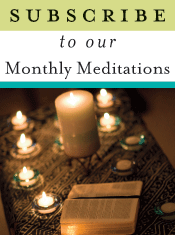September 30, 2024
In honor of the Season of Creation, the American Province Laudato Si’ Committee offers the reflection, “Cornelia, Francis, and Laudato Si'” to show how Cornelia’s charism connects with Laudato Si’.
That Cornelia had a special love of St. Ignatius and his spirituality is undeniable. That Cornelia had a special love of St. Francis and his spirituality is equally undeniable. Perhaps because we often use binary thinking (either-or, and then hierarchical), we find it challenging to hold both “specials” in a “both-and” relationship. But Cornelia recognized that, rather than competing, they complemented one another. She esteemed them both and encouraged her sisters to do the same. We sometimes limit her to St. Ignatius, but many examples exist of her esteem for St. Francis. A few follow:

From Catherine Gompertz, Life of Cornelia Connelly (p. 195): “In her love for St. Francis, Cornelia for a long time entertained the idea of having the Society affiliated with the Franciscan order. She even distributed the cord of St. Francis to the Nuns [sic] in most of the convents in 1876….”
From the Informatio (p. 197): “At Derby in 1848, Cornelia used the Fioretti (Little Flowers) of St. Francis for community reading. The Sisters took turns reading stories from it and it was through these “Little Flowers” that the Franciscan spirit was imbued in the Society. ‘Cornelia, like Francis, was drawn to the stable of Bethlehem where God was strong in weakness and where, having nothing, he possessed all hearts.’ ”
From Radegunde Flaxman, A Woman Styled Bold (p. 200): “Such was Francis of Assisi, the saint perhaps most loved by Cornelia.”
From Buckle and Bellasis, quoted by Caritas McCarthy, Spirituality of Cornelia Connelly (p167): “We now have a good idea of the Franciscan and Jesuit element of Mother Connelly’s soul — that the devotion to the Holy Child and the poverty of the crib was inspired or borrowed from St. Francis and the interior life from the teaching of St. Ignatius.”
Would Cornelia not rejoice to find the influence of both saints in Laudato Si’? Though written by a Jesuit, the title is taken from St. Francis’ canticle, and Francis is found throughout the document. Read carefully and be reminded of the beginning and ending meditation of the Spiritual Exercises. Anyone familiar with Teilhard de Chardin will catch the full depth of this sentence in par. 236: “The Eucharist is always in some way celebrated on the altar of the world.” Readers can find explicit and implicit references to both Jesuit and Franciscan spirituality throughout the document.
On the feast day of St. Francis of Assisi and the closing of the Season of Creation, Sisters of the Holy Child can celebrate the relevance of Laudato Si’ to each of us. Perhaps this document calls us to update our understanding and appreciation of both Ignatius and Francis in our charism as we implement Laudato Si’ – that details the greatest needs of our time — with actions, not words.
St Francis advised his followers to “Preach always. If necessary, use words.”
…..
Thank you to Terri MacKenzie, SHCJ, and Laudato Si’ committee members Margaret (Peggy) Doherty, SHCJ, and Holy Child Associat Michelle Dugan, for writing this reflection. Also, gratitude is sent to extended to Holy Child Associate Judy Talvachhia for her contributions.


Comments are closed.